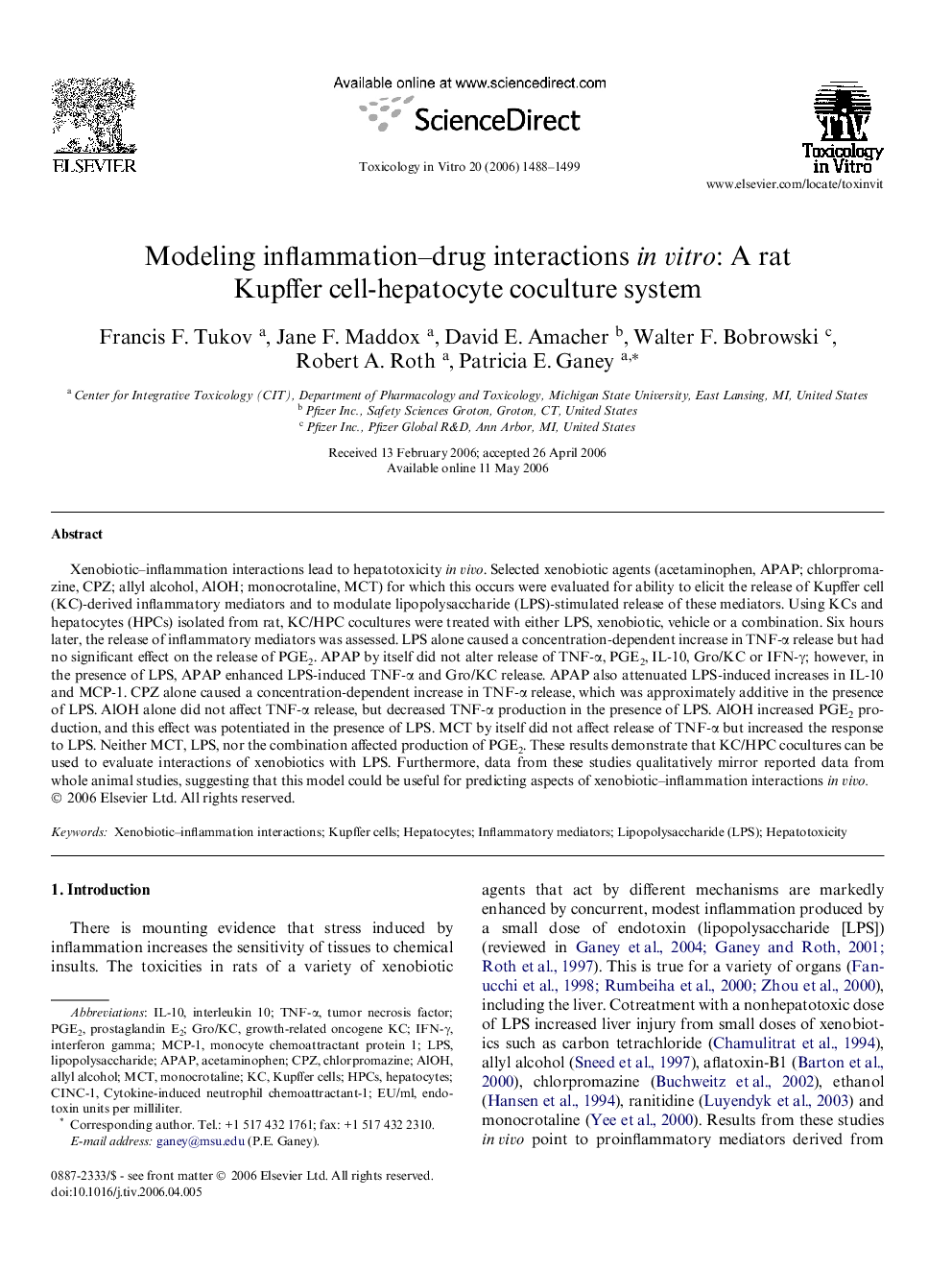| Article ID | Journal | Published Year | Pages | File Type |
|---|---|---|---|---|
| 2603593 | Toxicology in Vitro | 2006 | 12 Pages |
Xenobiotic–inflammation interactions lead to hepatotoxicity in vivo. Selected xenobiotic agents (acetaminophen, APAP; chlorpromazine, CPZ; allyl alcohol, AlOH; monocrotaline, MCT) for which this occurs were evaluated for ability to elicit the release of Kupffer cell (KC)-derived inflammatory mediators and to modulate lipopolysaccharide (LPS)-stimulated release of these mediators. Using KCs and hepatocytes (HPCs) isolated from rat, KC/HPC cocultures were treated with either LPS, xenobiotic, vehicle or a combination. Six hours later, the release of inflammatory mediators was assessed. LPS alone caused a concentration-dependent increase in TNF-α release but had no significant effect on the release of PGE2. APAP by itself did not alter release of TNF-α, PGE2, IL-10, Gro/KC or IFN-γ; however, in the presence of LPS, APAP enhanced LPS-induced TNF-α and Gro/KC release. APAP also attenuated LPS-induced increases in IL-10 and MCP-1. CPZ alone caused a concentration-dependent increase in TNF-α release, which was approximately additive in the presence of LPS. AlOH alone did not affect TNF-α release, but decreased TNF-α production in the presence of LPS. AlOH increased PGE2 production, and this effect was potentiated in the presence of LPS. MCT by itself did not affect release of TNF-α but increased the response to LPS. Neither MCT, LPS, nor the combination affected production of PGE2. These results demonstrate that KC/HPC cocultures can be used to evaluate interactions of xenobiotics with LPS. Furthermore, data from these studies qualitatively mirror reported data from whole animal studies, suggesting that this model could be useful for predicting aspects of xenobiotic–inflammation interactions in vivo.
